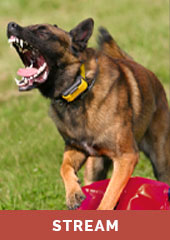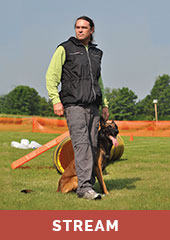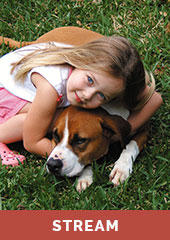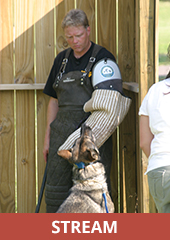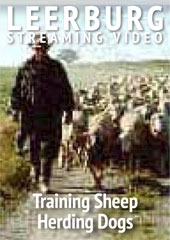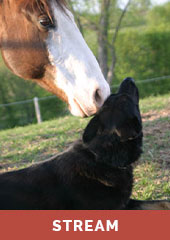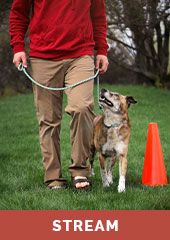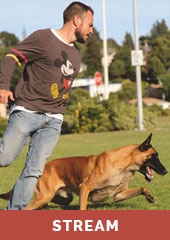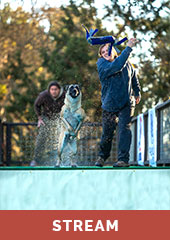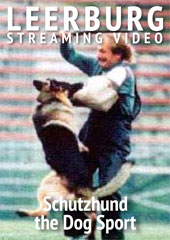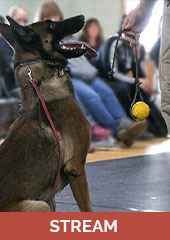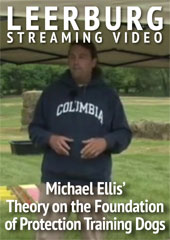
1 hr, 28 min
January 1, 2008
This is an 88 minute lecture by Michael Ellis on the foundation of protection training. Michael talks about training from puppyhood through adolescence. He discusses thresholds and drives in dogs and how each dog has to have its own training plan.
Michael explains that certain training techniques (IE the hold and carry) were designed for a very specific type of dog and how these techniques should not be used on a dog with a different temperament.
Michael explains why he trains dogs for all the various biting sports and disciplines (IE police service work) exactly the same from puppyhood through early teenage months. He explains how he wants the dog to have multiple ways of coping with the stress that a decoy brings to the training.
Michael explains why its important to get all dogs used to different type of biting surfaces and decoy styles. He explains why he wants his dogs to feel comfortable in biting more than one place on the decoys body.
Michael explains how a decoy must become a good actor. He talks about the various ways the decoy can add stress to the training and when to do it.
There is a section in the lecture where Michael goes into detail on when he adds aggression into the training.
Unless you have been to Michaels two week course at his school in California on protection training I am sure you have not heard anyone explain the foundation of protection work like you will here in this lecture.
Video on Demand
Instant access for a lifetime
Get huge savings on the DVD (view details)
Stream from anywhere around the world
Easy to jump to chapters
Add bookmarks/notes while you watch
Need help? Check our FAQ.
Michael Ellis' Theory on the Foundation of Protection Training Dogs
Uploaded on January 1, 2008 •
1 hr, 28 min
This is an 88 minute lecture by Michael Ellis on the foundation of protection training. Michael talks about training from puppyhood through adolescence. He discusses thresholds and drives in dogs and how each dog has to have its own training plan.
Michael explains that certain training techniques (IE the hold and carry) were designed for a very specific type of dog and how these techniques should not be used on a dog with a different temperament.
Michael explains why he trains dogs for all the various biting sports and disciplines (IE police service work) exactly the same from puppyhood through early teenage months. He explains how he wants the dog to have multiple ways of coping with the stress that a decoy brings to the training.
Michael explains why its important to get all dogs used to different type of biting surfaces and decoy styles. He explains why he wants his dogs to feel comfortable in biting more than one place on the decoys body.
Michael explains how a decoy must become a good actor. He talks about the various ways the decoy can add stress to the training and when to do it.
There is a section in the lecture where Michael goes into detail on when he adds aggression into the training.
Unless you have been to Michaels two week course at his school in California on protection training I am sure you have not heard anyone explain the foundation of protection work like you will here in this lecture.
Michael explains that certain training techniques (IE the hold and carry) were designed for a very specific type of dog and how these techniques should not be used on a dog with a different temperament.
Michael explains why he trains dogs for all the various biting sports and disciplines (IE police service work) exactly the same from puppyhood through early teenage months. He explains how he wants the dog to have multiple ways of coping with the stress that a decoy brings to the training.
Michael explains why its important to get all dogs used to different type of biting surfaces and decoy styles. He explains why he wants his dogs to feel comfortable in biting more than one place on the decoys body.
Michael explains how a decoy must become a good actor. He talks about the various ways the decoy can add stress to the training and when to do it.
There is a section in the lecture where Michael goes into detail on when he adds aggression into the training.
Unless you have been to Michaels two week course at his school in California on protection training I am sure you have not heard anyone explain the foundation of protection work like you will here in this lecture.
Comments
K9collegiate
November 1, 2018
Amazing amount of great info for all disciplines of protection work. Thank you.
kojo911
April 5, 2017
great survey. Especially his focus on genetics, bites, drives. I've seen a lot of decoys try to force a square peg into a round hole!
jordan
October 19, 2015
Great video.. Very useful for all phases
jimcknight
May 4, 2013
This is a great video, worth every penny. One of the best I have ever watched.
AnnMcQueen
December 31, 1969
This video was extremely helpful to me. I have been dabbling in Schutzhund for five years, and this is the first time I've received an overview of the theories and principles involved in protection training my dogs. One particularly beneficial piece of information deals with working with aggression. I was not comfortable working my dog in anything but prey drive, but this video's explanations of defense and aggression puts my fears to rest. I believe that people with much more experience than I will also find useful information in this video. Most importantly, it gives us a foundation and common language in training for the protection sports in a way that's healthy and humane for our dogs.

